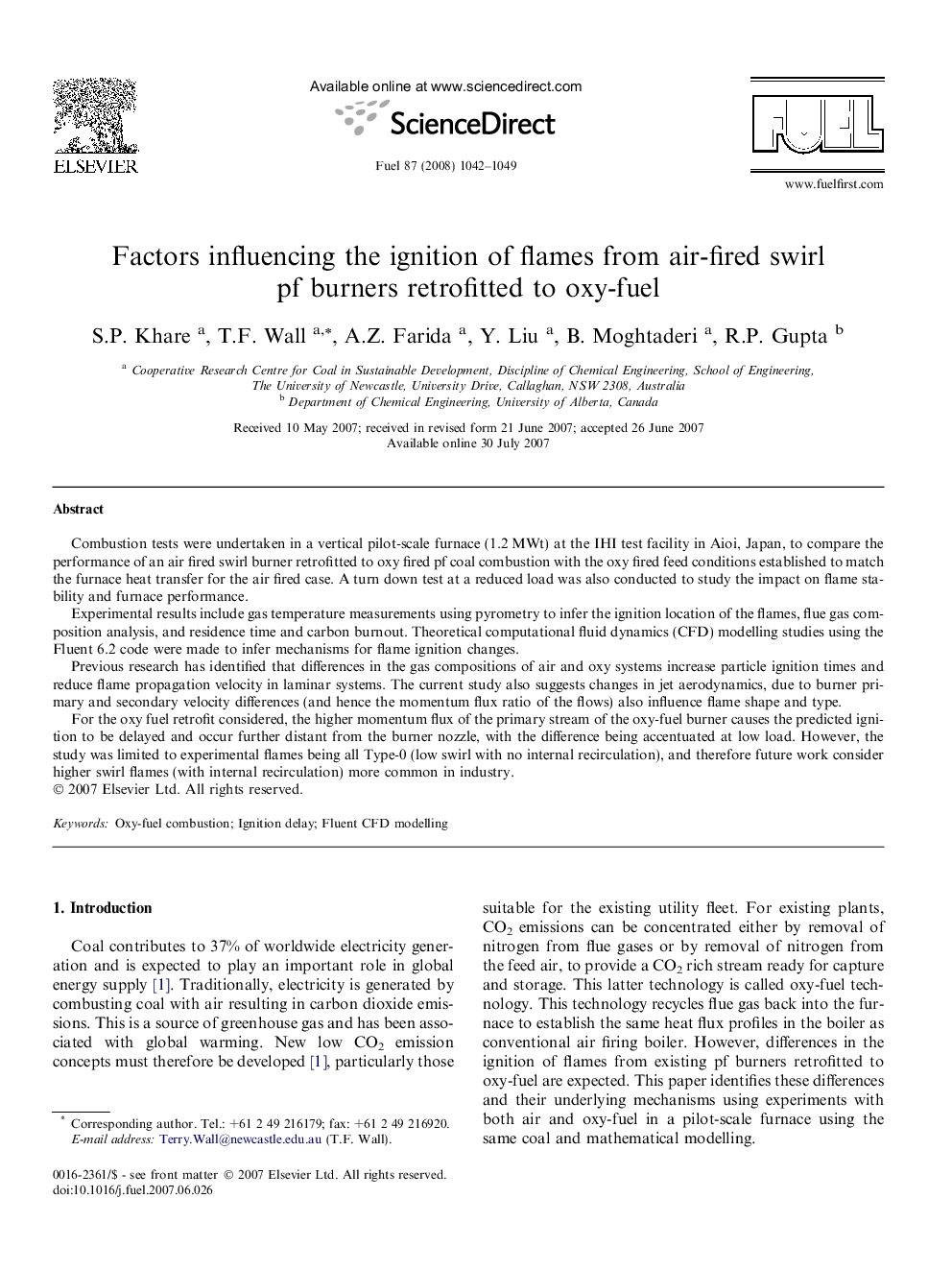| Article ID | Journal | Published Year | Pages | File Type |
|---|---|---|---|---|
| 208005 | Fuel | 2008 | 8 Pages |
Combustion tests were undertaken in a vertical pilot-scale furnace (1.2 MWt) at the IHI test facility in Aioi, Japan, to compare the performance of an air fired swirl burner retrofitted to oxy fired pf coal combustion with the oxy fired feed conditions established to match the furnace heat transfer for the air fired case. A turn down test at a reduced load was also conducted to study the impact on flame stability and furnace performance.Experimental results include gas temperature measurements using pyrometry to infer the ignition location of the flames, flue gas composition analysis, and residence time and carbon burnout. Theoretical computational fluid dynamics (CFD) modelling studies using the Fluent 6.2 code were made to infer mechanisms for flame ignition changes.Previous research has identified that differences in the gas compositions of air and oxy systems increase particle ignition times and reduce flame propagation velocity in laminar systems. The current study also suggests changes in jet aerodynamics, due to burner primary and secondary velocity differences (and hence the momentum flux ratio of the flows) also influence flame shape and type.For the oxy fuel retrofit considered, the higher momentum flux of the primary stream of the oxy-fuel burner causes the predicted ignition to be delayed and occur further distant from the burner nozzle, with the difference being accentuated at low load. However, the study was limited to experimental flames being all Type-0 (low swirl with no internal recirculation), and therefore future work consider higher swirl flames (with internal recirculation) more common in industry.
